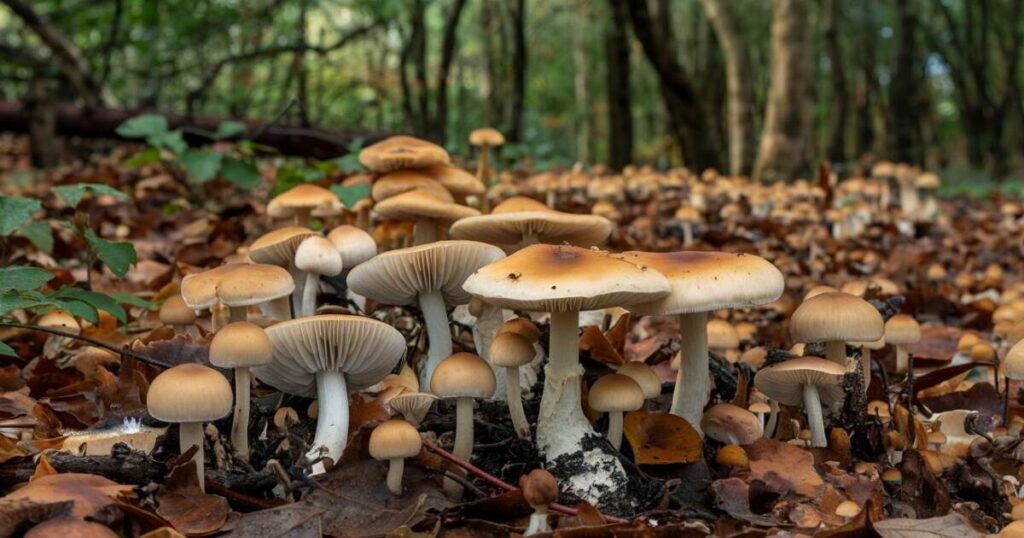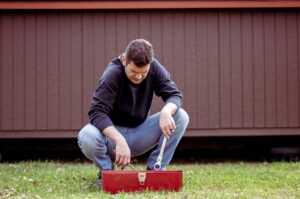Psychedelic mushrooms, commonly known as “shrooms,” have been used for centuries in various cultures for spiritual, medicinal, and recreational purposes. One of the most common questions people have about shrooms is, “How long does a shroom trip last?” This comprehensive guide will delve into the duration of a typical shroom trip, factors that influence its length, and what to expect during different phases of the experience.
Introduction to Shroom Trips
Shroom trips, also known as psilocybin experiences, are induced by consuming mushrooms containing psychoactive compounds, primarily psilocybin and psilocin. These substances interact with serotonin receptors in the brain, leading to altered perceptions, emotions, and thought processes.
Before diving into the duration of a shroom trip, it’s essential to understand that each experience is unique and can vary significantly from person to person. Factors such as dosage, individual physiology, and environmental conditions all play a role in shaping the trip’s length and intensity.
The Average Duration of a Shroom Trip

On average, a typical shroom trip lasts between 4 to 6 hours. However, this timeframe can be broken down into several distinct phases, each with its own characteristics and duration:
- Onset: 20-40 minutes
- Come-up: 40-60 minutes
- Peak: 2-3 hours
- Come-down: 1-2 hours
- Afterglow: Several hours to days
It’s important to note that these timelines are approximate and can vary based on individual factors and circumstances. Some users may experience effects for up to 8 hours, while others might have shorter trips lasting around 3-4 hours.
Factors Affecting the Length of a Shroom Trip
Several factors can influence how long a shroom trip lasts:
1. Dosage
The amount of psilocybin-containing mushrooms consumed is perhaps the most significant factor in determining trip duration. Higher doses generally lead to longer and more intense experiences. Here’s a rough guide to dosage and duration:
- Low dose (0.5-2g dried mushrooms): 3-4 hours
- Moderate dose (2-3.5g dried mushrooms): 4-6 hours
- High dose (3.5-5g dried mushrooms): 5-8 hours
2. Mushroom Species and Potency
Different species of psilocybin-containing mushrooms vary in their potency. For example, Psilocybe cubensis is a commonly consumed species, while Psilocybe azurescens is known for its higher potency. More potent strains may lead to longer-lasting effects.
3. Individual Physiology
Factors such as body weight, metabolism, and natural tolerance to psychedelics can affect how long the trip lasts. Some individuals may naturally process psilocybin more quickly, resulting in shorter trips.
4. Method of Consumption
How the mushrooms are consumed can impact the onset and duration of effects:
- Eating raw or dried mushrooms: Slower onset, longer duration
- Brewing into tea: Faster onset, potentially shorter duration
- Lemon tek (soaking in lemon juice): Faster onset, potentially more intense but shorter duration
5. Tolerance
Regular use of psilocybin mushrooms can lead to tolerance, potentially shortening the duration and intensity of subsequent trips. It’s generally recommended to wait at least two weeks between trips to reset tolerance.
6. Set and Setting
The user’s mindset (set) and physical environment (setting) can influence the perceived duration of a trip. A comfortable, relaxed setting may lead to a more enjoyable and seemingly shorter experience, while a challenging environment could make the trip feel longer.
7. Interactions with Other Substances
Combining shrooms with other drugs or medications can alter the duration and intensity of the trip. For example, some antidepressants may diminish the effects, while cannabis might intensify or prolong the experience.
Phases of a Shroom Trip
Understanding the different phases of a shroom trip can help users better prepare for and navigate the experience:
1. Onset (20-40 minutes)
The onset phase begins shortly after consumption. Users may experience:
- Subtle changes in mood and perception
- Slight visual alterations
- Mild physical sensations, such as tingling or warmth
2. Come-up (40-60 minutes)
As the psilocybin is metabolized, effects intensify:
- Increased sensory perception
- Visual distortions become more pronounced
- Emotional shifts may occur
- Some users may experience nausea or anxiety during this phase
3. Peak (2-3 hours)
The peak is typically the most intense part of the trip:
- Strong visual and auditory hallucinations
- Profound alterations in thought patterns and perception of reality
- Intense emotions and introspection
- Time distortion (minutes may feel like hours)
4. Come-down (1-2 hours)
As the effects begin to subside:
- Gradual return to normal perception
- Decreased intensity of visual and emotional effects
- Potential feelings of fatigue or contemplation
5. Afterglow (Several hours to days)
After the primary effects wear off:
- Lingering sense of well-being or insight
- Subtle perceptual changes may persist
- Potential for emotional or psychological integration of the experience
Short-Term and Long-Term Effects
Short-Term Effects
During a shroom trip, users may experience:
- Enhanced mood and euphoria
- Increased creativity and introspection
- Altered perception of time and space
- Visual and auditory hallucinations
- Synesthesia (blending of senses)
- Nausea or stomach discomfort
- Anxiety or paranoia (especially in high doses or unfavorable settings)
Long-Term Effects
While the acute effects of a shroom trip typically last 4-6 hours, some users report lasting changes:
- Increased openness and empathy
- Reduced symptoms of depression and anxiety (in controlled settings)
- Enhanced creativity and problem-solving abilities
- Potential for spiritual or personal growth
- Rare cases of Hallucinogen Persisting Perception Disorder (HPPD)
It’s important to note that long-term effects can be both positive and negative, depending on the individual and the context of use.
Comparing Shroom Trip Duration to Other Psychedelics
To provide context, here’s how the duration of a shroom trip compares to other common psychedelics:
- LSD: 8-12 hours
- DMT: 15-60 minutes (smoked), 4-6 hours (ayahuasca)
- Mescaline: 8-16 hours
- 2C-B: 4-8 hours
- Ketamine: 30-60 minutes
Shrooms offer a relatively manageable duration compared to longer-lasting substances like LSD or mescaline, making them appealing to some users who prefer a shorter psychedelic experience.
Safety Considerations and Precautions
While psilocybin mushrooms are considered to have a low risk of physical harm or addiction, there are important safety considerations to keep in mind:
- Start with a low dose: Especially for first-time users, starting with a low dose can help gauge individual sensitivity and minimize the risk of overwhelming experiences.
- Choose a safe setting: A comfortable, familiar environment with trusted individuals can greatly reduce the risk of anxiety or challenging experiences.
- Have a sober trip sitter: A trusted friend who remains sober can provide support and ensure safety during the trip.
- Avoid mixing with other substances: Combining shrooms with alcohol, cannabis, or other drugs can lead to unpredictable effects and increased risks.
- Be aware of contraindications: Individuals with a history of mental health issues, particularly psychosis or schizophrenia, should avoid using psilocybin mushrooms.
- Allow time for integration: Plan for adequate rest and reflection time after the trip to process the experience.
- Stay hydrated: Drink plenty of water before, during, and after the trip to stay hydrated.
- Avoid operating vehicles or machinery: Do not drive or engage in potentially dangerous activities while under the influence of psilocybin.
Legal Status and Risks
It’s crucial to be aware of the legal status of psilocybin mushrooms in your jurisdiction. In many countries, possession and use of these substances are illegal and can result in serious legal consequences.
However, there is a growing movement towards decriminalization and research into the therapeutic potential of psilocybin. Some jurisdictions have begun to relax laws around personal use and possession of small amounts.
Despite potential therapeutic benefits, unsupervised use of psilocybin mushrooms carries risks:
- Legal repercussions
- Psychological distress or exacerbation of underlying mental health conditions
- Potential for accidents or risky behavior while under the influence
- Risk of consuming misidentified or contaminated mushrooms
Frequently Asked Questions
Can I make a shroom trip last longer?
While you can’t directly extend the duration of psilocybin’s effects, some users report that consuming cannabis during the come-down phase can prolong certain aspects of the experience. However, this combination can also intensify the trip and may lead to anxiety in some individuals.
How long do shrooms stay in your system?
Psilocybin and its metabolites are typically undetectable in urine after 24-48 hours for most standard drug tests. However, specialized tests may detect traces for up to a week after use.
Is it possible to have a “bad trip” on shrooms?
Yes, challenging experiences or “bad trips” can occur, especially with high doses or in unfavorable settings. These experiences can feel longer and more intense but typically don’t extend the actual duration of the trip.
How long should I wait between shroom trips?
To allow for tolerance reset and psychological integration, it’s generally recommended to wait at least two weeks between trips. Some users prefer longer intervals of a month or more.
Can microdosing affect the duration of future trips?
Regular microdosing (taking sub-perceptual doses) may build some tolerance, potentially affecting the intensity of future full-dose experiences. However, it typically doesn’t significantly alter the duration of a full trip if adequate time is allowed between doses.
Conclusion
The duration of a shroom trip typically ranges from 4 to 6 hours, with effects peaking around 2-3 hours after consumption. However, the exact length and intensity of the experience can vary based on factors such as dosage, individual physiology, and environmental conditions.
Understanding the phases of a shroom trip and the factors that influence its duration can help users make informed decisions and prepare for the experience. It’s crucial to approach the use of psilocybin mushrooms with respect for their potent effects and potential risks.
As research into the therapeutic potential of psilocybin continues, it’s possible that our understanding of these substances and their effects will evolve. For now, those considering using shrooms should prioritize safety, legality, and responsible use.











